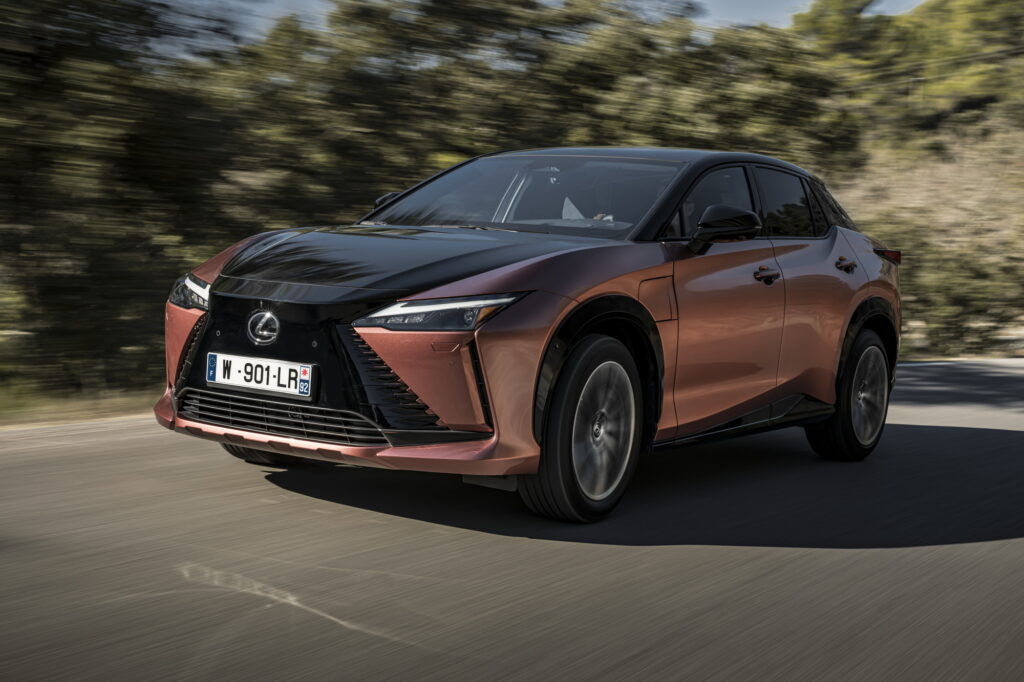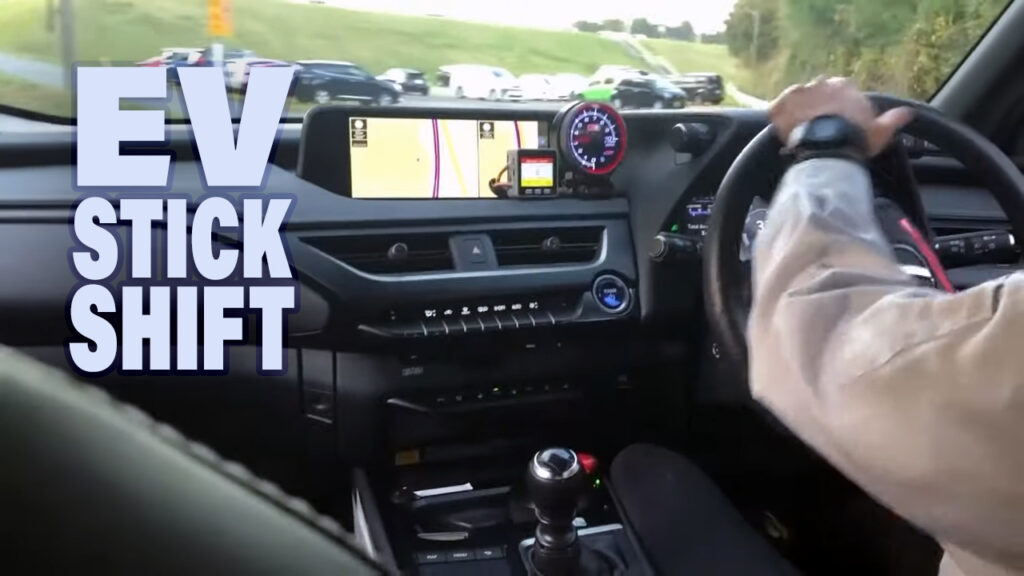Toyota’s sales of battery-electric vehicles are lagging behind many of its rivals but the auto giant is investing billions into them and wants to make them fun. It is so serious about adding some excitement and driver involvement into its EVs that it has gone as far as to develop a simulated manual transmission.
We’ve heard about Toyota’s plans for a simulated manual before, but only recently did the carmaker let outsiders test this transmission for the first time. The system is currently fitted to a Lexus UX 300e and includes a clutch pedal, a traditional tachometer, and a six-speed stick shift in the console. There are no mechanical linkages for these parts and they instead use sensors to mimic the feeling of driving a traditional manual.
Auto News tested out the system in Japan and says that it works just like an ordinary manual. That means it responds to bad inputs like insufficient use of the throttle and poor use of the clutch pedal. The system also interrupts torque while shifting and while we cannot imagine it taking off on a vehicle like the UX, it could be well-suited to future electric sports cars from the brand, like a potential production version of the FT-Se.
More: Lexus Is Developing A Manual Gearbox For EVs
This isn’t the only intriguing thing that Toyota’s engineers are working on to add some spice to its EVs. By placing a small 3D-printed scale model of an ICE-powered Toyota model on the center console, the character of an RZ prototype can be changed completely. For example, when an engineer places a model of the Toyota Passo kei car on the console, the RZ attempts to mimic the 90 hp car with fake sounds and weak acceleration.
Read: Toyota Chairman Says “People Are Finally Seeing Reality” Of EVs
The system also works when a model of a Tundra is positioned correctly. The RZ starts to sound like a turbocharged V6 and has simulated automatic shifts just like the pickup. The RZ test vehicle has even been designed to mimic a Lexus LFA with a screaming artificial V10 engine note and suspension that is automatically stiffened to maximize handling.
Are these systems a gimmick or are they a good way to win over revheads? Let us know your thoughts below.




